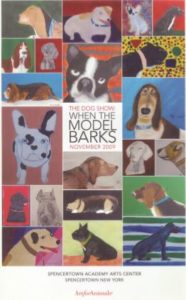Adding Another R to the 3 Rs
 As an educator I always found the first days of school to be exciting. Yet there was always something very sad about it, as students struggled with the excitement of a new year against the background of losing a prized animal to the livestock auction after the Labor Day weekend county fair. They knew to expect what was going to happen, coming from a rural community, but the reality was something else. I shared many tears with them during their visits to my room.
As an educator I always found the first days of school to be exciting. Yet there was always something very sad about it, as students struggled with the excitement of a new year against the background of losing a prized animal to the livestock auction after the Labor Day weekend county fair. They knew to expect what was going to happen, coming from a rural community, but the reality was something else. I shared many tears with them during their visits to my room.
This is the loss they knew about. What about the horses who were sent to slaughter after their usefulness at summer camp was exhausted? What about the baby animals at petting zoos? With all this in mind, NYSHA’s focus in our fall issue is how we can all do our part to make this a better world for animals — after all, it is their world, too. The beginning of the school year is the perfect time to talk about NYSHA’s humane education initiatives.
In grammatical terms, “Reading, ‘Riting, and ‘Rithmetic” leaves a lot to be desired, but let’s add another “R” — Respect. Humane Education is fundamentally about respecting the welfare and rights of others, of all species. It is mandated in New York State for grades 1 to 6, but never enforced and rarely encouraged. At NYSHA we know it is critically important, have greatly expanded our website to include resources for both teachers and others, and are trying to work with the State Education Department and legislators to insure that this law is adhered to.
NYSHA has always been committed to education. We have taught workshops for law enforcement officials, shelter personnel, and the general public. Since many of us on the NYSHA Board have backgrounds as educators, we know firsthand what obstacles teachers face and added this extensive guide to our webpage to assist them as well as administrators. There are resources all over the Internet, but we compiled what we felt were the most useful and practical for a variety of students, teaching styles, and grade levels into a user friendly format.
There are so many easy ways for teachers to incorporate humane ed that fit in with the curriculum. Years ago in my school we brought rescued dogs in as models for art classes as their caregivers told their stories, encouraging students to take better care of their own animals and to report abuse. We had an art show and sold their paintings, using the proceeds to fund a spay/neuter program. We took older students to a horse rescue facility and while sketching, they heard their harrowing histories and the downside of the racing and other equine industries. To this day students tell me how these activities changed their lives and their attitudes.
In language classes they counted, in Spanish, how many cats would result in careless breeding. They made a poster about responsible pet care in Italian. Reading classes were used at all levels to promote literature about animals. In language arts classes they wrote and shared stories about their own rescued dogs and cats. We suggested that teachers not read stories about farm animals that made their situations seem perfect. All these activities gave teachers an insight into the lives of our students and their pets, and helped with intervention services when necessary. Many suggestions like these can be found on our new humane education page.
We can all be educators. One day I was wearing a lovely summer hat and somebody said I looked like I could be at Saratoga Race Course, considering that a compliment. What an opportunity to explain why I would never go there! It helps to carry around printed information as well. But so many little things make a difference, too. Recently boxes of animal crackers were redesigned with the animals out of their cages — a subliminal but effective change, the result of public pressure.
Please visit our website – nyshumane.org — and pass the link on to teachers and parents you know. Most importantly, contact your local school district and explain why humane education is a priority — and that it is the law. NYSHA is dedicating its resources to this important issue and is there to help with its implementation.
Laura-Ann Cammisa, Board Member
New York State Humane Association Humane Review, Vol.XXXIII, Fall 2018.